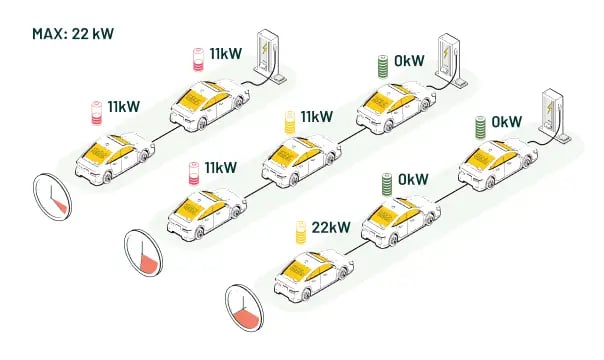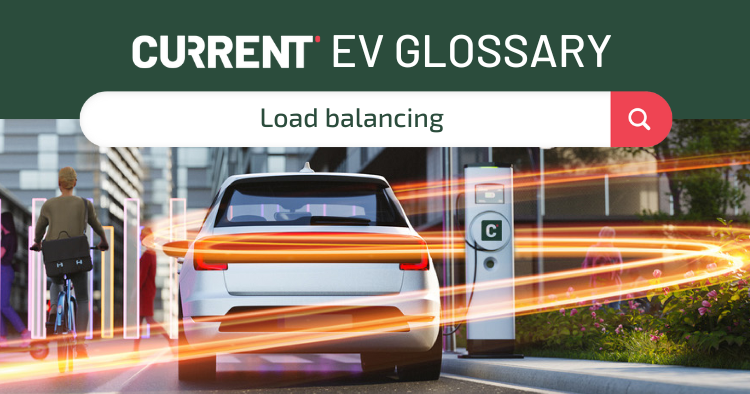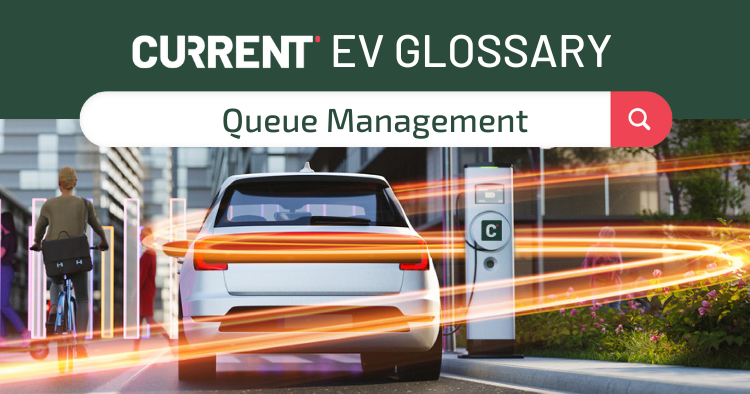Dynamic Load Balancing
WHAT IS DYNAMIC LOAD BALANCING?
Dynamic load balancing is a function that continuously monitors changes in energy consumption in an electrical circuit and automatically allocates available capacity to different electrical devices. In the context of EV charging, dynamic load balancing refers to a technique used in electric vehicle (EV) charging systems. This technique involves efficiently distributing available power to different charging devices or EV batteries based on their needs and availability. The aim is to optimise charging to avoid overloading charging stations or electrical networks while ensuring that EVs are charged as quickly as possible. Dynamic load balancing takes into account factors such as grid capacity, available energy and individual charging speeds for each EV, and dynamically adjusts the charging speed to achieve a smooth and efficient charging experience. This approach helps to optimise the use of available power, thereby improving the performance and reliability of the EV charging infrastructure.

WHAT ARE THE BENEFITS OF DYNAMIC LOAD BALANCING in EV Charging?
1. Optimised energy efficiency
Dynamic load balancing adapts power distribution in real-time, ensuring that each EV gets exactly the amount of power it needs, without excess usage. This helps to minimise energy waste and increase efficiency. By optimising the use of available power resources, dynamic load balancing improves the efficiency of electrical systems and helps reduce operating costs.
2. Reduced energy consumption
By preventing excessive power consumption and improving the utilisation of available resources, dynamic load balancing helps to reduce overall energy consumption and avoid costly capacity expansions to ensure sufficient power displacement.
3. Overload prevention
The system identifies and handles overload situations by distributing power evenly. This reduces the risk of power outages and damage to electrical components. EV charging can use up a lot of the electrical capacity of a property. If an additional EV charger is installed at a property, without first increasing the amount of available electricity, you may experience capacity issues that can lead to overloading.
4. Increase reliability
Dynamic load balancing helps maintain a stable power supply and reduces the risk of power outages, which is especially important in critical applications such as data centres, industrial facilities, or charging stations. Let's take a closer look at why commercial buildings and charging operators need a DLB system:
- A commercial building, such as a hotel or petrol station, may not be designed for EV charging. The property's capacity needs to be managed carefully to avoid overloading the system.
- Charging operators will certainly need DLB as they will be charging a lot of cars. Assuming different charging speeds and battery levels, the best power distribution can be determined in real time by a DLB controller.
5. Automation
Dynamic load balancing is performed automatically, requiring minimal human operator intervention, providing a reliable and efficient solution. After the installation of the electrical system, there is little that needs to be done. For example, if a homeowner buys a vehicle that needs higher charging power or gets an extra car, no upgrades are required as the system automatically allocates available capacity.
These are significant advantages, but there are some disadvantages, which mainly relate to installation costs. The installation cost of the system is high, due to the cost of the equipment itself and additional cabling.
Why Do We Need Load Balancing?
If you look at the issue dynamic load balancing solves, you can figure out how it works. Electrical circuits have a maximum load and may overheat if too much power is applied.
Most contemporary houses feature circuit breakers that shut off the power if the circuits are overloaded. This is because overloaded circuits may create fires. Also, running multiple power-hungry appliances uses all the available power and will trip the breaker, causing a home power outage.
When the electricity goes out, it's inconvenient and uncomfortable, but you may try shutting off power-hungry equipment to restore it. In this situation, dynamic load balancing may monitor how much power is being used on your circuit and intelligently provide it to the appliances that need it most. This enables several appliances to function without overloading the circuit.
Evaluating Whether You Need a Load Balancer for Your Property
The only way to determine whether you need a load balancing device is to check the power consumption of your property. You can do this in a few ways:
- Simply hire an electrician and have them measure it for you.
- Call your energy company and ask how much unused capacity your property has.
- Measure yourself by subtracting the current draw of all your appliances from the power rating on your main fuse.
Once you know how much available power you have, you can tell whether you need a load balancer. If your EV charger will overload your main fuse, then you need a load balancer.
Other Ways to Control How Much Power Your EV Charger Uses
If you've gone through the above steps, you'll be aware of your home's power consumption and how an EV charger will affect your system. This means you can take some other steps to reduce the loads on your systems. Doing so means you can avoid the cost of a dynamic load balancing EV charger.
Let's cover the two simplest ways to manage the charging power and your main fuse.
Use a charger with lower power output
The simplest choice is to pick a charger that delivers less charging current. A slower charger could take longer, but allows you to protect your home's power distribution. This ties into the second easy way to control your power consumption.
Charge your electric car at night
Charging your car overnight means using energy when the network is least loaded and the prices may be lower. This is a great option for most homeowners because they tend to charge overnight, anyway.
Commercial Dynamic Load Balancing
A better example of the usefulness of a dynamic load balancing system is a charging point operator. These locations serve multiple users on more than a single device regularly. A DLB system gives them the ability to make the most efficient use of available power and charging points.
Here's how it works:
- Multiple cars plug into the system, drawing power from the grid.
- The DLB is constantly monitoring the power draw from each car and their current charge state.
- Power can be distributed to the car that needs it most in response to the charge state of each battery and their charging current potential.
Installing a large amount of DLB systems connected across the grid can create a very flexible system that uses data to avoid a power grid overload.
Summary
Here's what we know about dynamic load balancing:
- DLB is a way of changing the amount of power being delivered to a charger to avoid overloading a building's electrical system.
- Homeowners can use DLB to make the most efficient use of energy and save money.
- Businesses need a DLB controller to manage their capacity and deliver the power to the charging station most in need of it.
If you'd like to know more about dynamic load balancing or have questions about other EV technology, please read more of our glossary pages.


